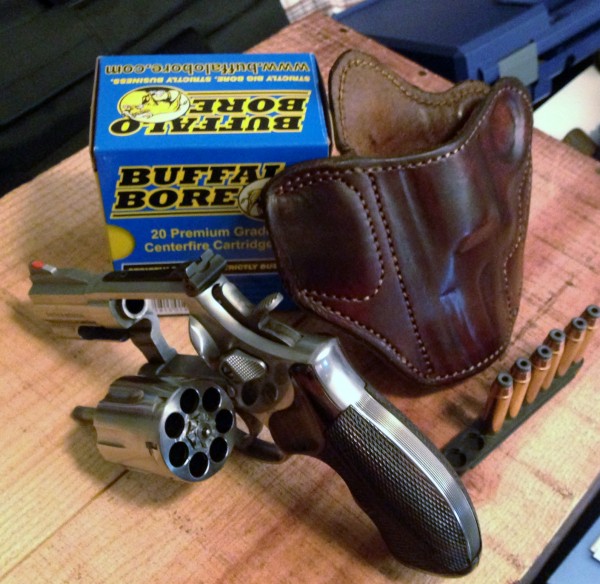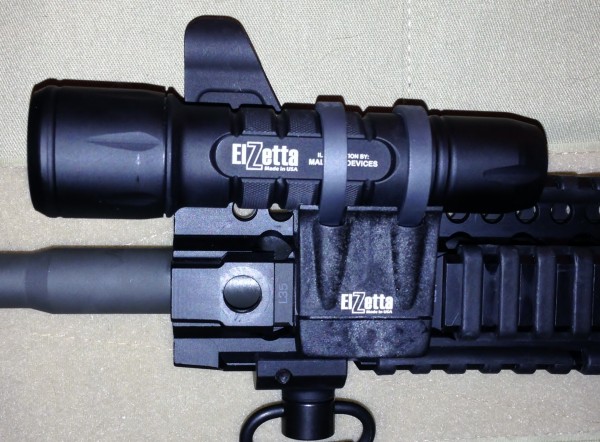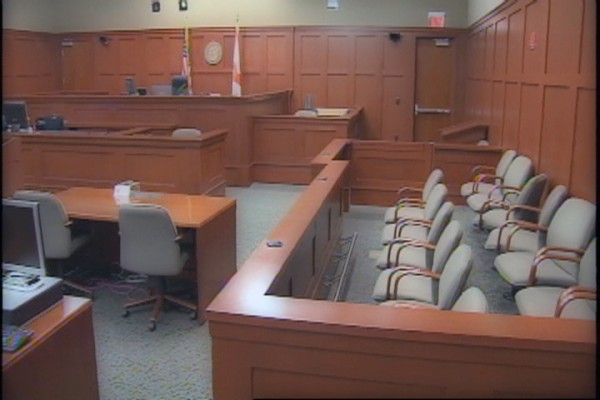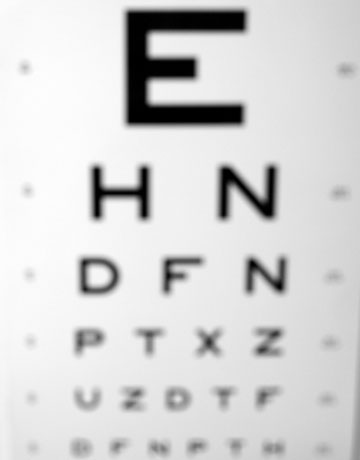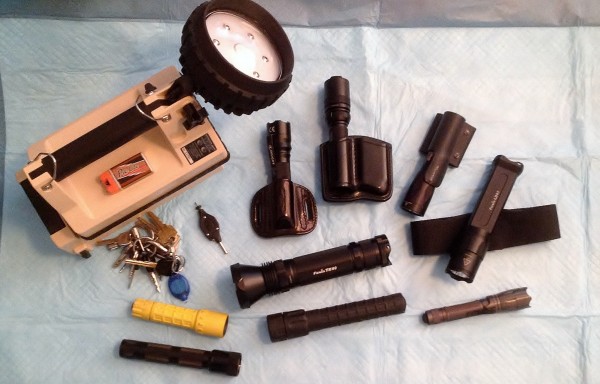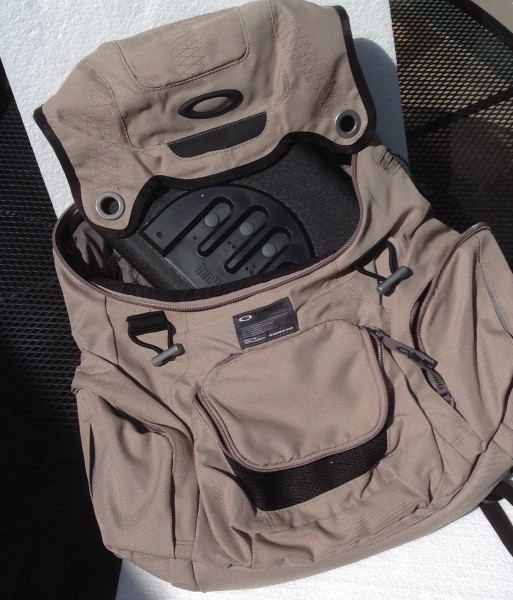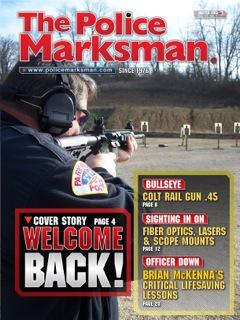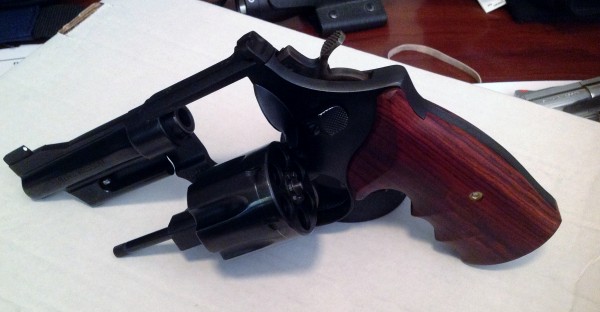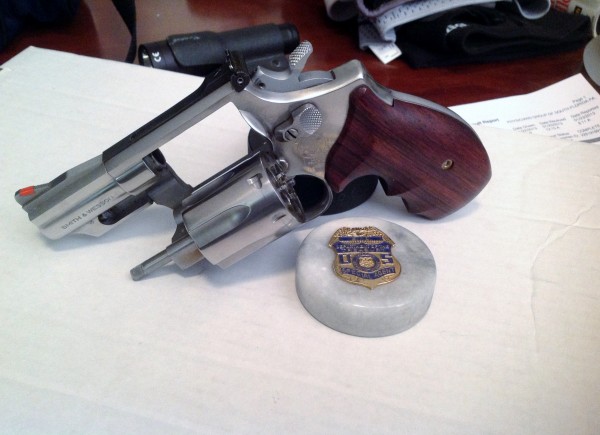Socks are an often overlooked but important piece of kit. The importance of high quality and application specific socks cannot be overstated, whether you are military, LE, hiker, hunter, urban walker, runner/jogger, competition shooter, or stand protective post or at a workbench for extended periods. I have been trying different socks for some 30 years. Continue reading
Author Archives: Steven Harris
Made In The USA: Two AR Related Issues Solved
I recently completed a stripped Gen 2 Noveske Chainsaw Grade lower and topped it off with a BCM mid-length upper with a Centurion Arms rail. For my optic I chose both a Trijicon ACOG (the compact 1.5 X 16S, see here) or a short base EOTech (see here). A good looking, well set up AR with optics, Made In The USA! For white light, I mounted a Surefire X300 Ultra. Fits and looks good, and is lightweight . . . I even like the way the activation switches work, except for one issue, see below. (Prior Jerry Jones MSW post about the Surefire is here).
LEGAL NEWS FLASH: Supreme Court to Wade Into “Straw” Purchase Morass
Ever buy a gun for someone else (a friend or relative who is lawfully allowed to own firearms)? Maybe as a favor because you are at a gun show they could not attend, you have a Gunbroker account and they do not, or because you get a LEO or other discounted price? Tread lightly, you might wind up “breaking bad.” A criminal conviction in one such case will be reviewed by the U.S. Supreme Court. Review was granted by order of October 15, 2013. Expect the court’s opinion in the Spring of 2014. (Abramski v. United States, Docket No. 12-1493).
“CASTLE” DEFENSE: WHAT CAN–MAY–SHOULD–MUST YOU DO
Those who “sleep peaceably” in their bed must on occasion (and really short notice) rise to become “rough men ready to do violence” in defense of their castle. (Hat tip to George Orwell). Home invasion is perhaps the most frightening and dangerous of all violent crimes (it is committed out of public sight usually without fixed time/escape constraints and innocent occupants, often women and children, are rarely able to flee). It is becoming somewhat commonplace during daylight hours and at night in both urban and rural neighborhoods. Examples include two of the most horrific in memory, from Florida, (here) and (video here), one from Connecticut (here), one from Maine, an old one (here), and recent ones which ended in the death of a home invader (here) and (here), other recent ones, also very ugly, (here) and (here), and a routinely reported compilation of many in California (here). Finally, who can forget the single home invader who, for no apparent reason, brutally beat a New Jersey mother (video here) in front of her infant child? The spine chilling, heartbreaking details of these incidents provide good reality based scenarios for family drills training.
A home invasion commonly involves multiple malefactors who either didn’t anticipate the presence of occupant(s) when committing a residential burglary, or simply don’t care if the premises are occupied, because they have included in their criminal repertoire threatening deadly force or doing actual bodily harm, regardless of victim acquiescence. Home invaders often have violent criminal pasts, impersonate law enforcement, and carry weapons. Even if they enter unarmed, they easily find edged and impact weapons and other items (see above photo), which they can use to disable or restrain occupants or inflict lethal injury or great bodily harm. (Spoiler: Restraint of or forcing occupants into another room against their will likely constitutes an independent crime of false imprisonment, kidnapping, or other felony to which deadly force is ordinarily the indicated and lawful response).
My focus here is the MAY component of my deadly force paradigm (prior MSW post here), that is: Does the law permit the use of deadly force in defense of castle? Allow me to set up the MAY by first examining the use of defensive deadly force in a home invasion under the other components of my paradigm : CAN — SHOULD — MUST.
The CAN component should be easily answerable for those with basic home defense training and practiced shooting skill (close quarters pistol and making the “rescue” shot). It is your home, you are familiar with the layout, location of other occupants, areas of refuge, concealment and cover, and you have made preparation for a sudden, unlawful entry, including (when possible) emergency exfil of innocents. You know the location of defensive weapons (maybe you are wearing a handgun) and have planned for various scenarios. In addition, you have preselected ensconced positions of offensive and defensive superiority. You retain the element of surprise (because of CCTV, perimeter alarm with panel identifying breached sensor or zone, activated lights, motion detectors, or other device). Shooting will be likely be an engagement of less than 40 feet, with no uncertain intermediate barriers (you know which interior walls are wood, drywall, plaster, or concrete) or backstops. Innocents have been secured with you, or if not, they are hunkered in a known location. All of your defensive weapons, accessories, ammunition, untethered communication devices, and tactical and medical kit are on hand. Eye and ear protection may be deployed, time and planning permitting. If not here in your castle, where?
The SHOULD and MUST components are likewise easily analyzed, more so than in other self defense situations. The legally recognized sanctuary of your “castle” has been invaded. The presence of criminal-minded strangers who have made forceful entry often ends in great bodily harm or death, and such heinous crimes carry long prison sentences. Innocent lives (yours included) are clearly in extreme peril. Escape is often impossible or impractical, as an attempt to do so may put innocent life in increased danger. You have issued a verbal challenge or decided to do so would be tactically unsound, and have a target at gunpoint or are at your favorite ready position. The home invaders are now aware the castle is occupied and their presence is known, but have chosen not to make a hasty exit. If not now, when?
Here’s my take on the MAY, based on what I perceive to be a consensus of state laws applied to the scenario outlined above. Force, but not deadly force is allowed when necessary to eject a simple trespasser from real property. Deadly force is rarely permitted in the defense of real property. (Notable exceptions are to prevent the setting or hurling of incendiary/explosive devices). However, property crimes which include unlawful entry, that is, burglary, of occupied residential premises or home invasion robbery are not treated as mere property crimes. This is because they include unlawful use of force or threat of unlawful force against persons. In recognition of that, the law usually allows deadly force to be used to terminate the commission of such crimes without assessment of the victim’s belief or the imminence of the threat of death or great bodily harm.
When confronted with criminal threatening actors, deadly force is also usually permissible when a reasonable person would believe it to be necessary to protect against unlawful deadly force (force likely to cause death or great bodily harm) being used against an innocent. (State law may limit the defense of others defense to persons to whom one owes a duty of protection or to one who bears a certain blood relationship). It is my opinion that a home invader who refuses to promptly leave upon discovery, especially upon an invitation at gunpoint to do so, is an imminent lethal threat whether armed or not.
The is no duty to retreat within the premises of one’s “castle” nor to undertake an attempt to escape to the outdoors, before otherwise lawful deadly force may be employed. Contrary to widely-held belief, unless case law has imposed an offbeat requirement, neither a breach nor actual entry into the castle need occur to justify the use of deadly force. Nor is there a requirement the home invader be found inside the castle threshold to support a defense of justification or self defense.
Some states have adopted a so-called Stand Your Ground provision or expanded the “no retreat” castle rule beyond the defender’s permanent residence. The perimeters of the “castle” may include a fenced yard, carport, unattached or attached garage or other structure, lawn, patio, porch. Statute or case law may also expand the “castle” definition to include business/place of employment premises, a hotel/motel room, mobile home, or vehicle. Several are fashioned after Florida law, and may include Florida’s provision which supplies presumptions that a home invader who has made unlawful entry by force is presumed to intend an unlawful act of force or violence, and the defender’s fear of imminent peril of death or great bodily harm is reasonable.
A frequent question asked about castle defense is whether there is a duty to retreat and/or cease the use of force once the malefactor is downed/wounded or for some other reason no longer appears threatening. Many believe that is the prudent course of action regardless of what the law allows. State statute or case law on use of force may supply the legal answer if there is a reasonableness or actual necessity requirement on the use of force. (This would be analogous to the constitutional prohibition of “excessive force” by LEO’s). A consideration which muddies the issue is whether the castle defender has the ability to take and hold one or more potentially non-compliant criminals at gunpoint. (A very dangerous undertaking for a single armed defender). An Oklahoma case involving a pharmacy robbery comes to mind on this issue (here). The defensive use of deadly force (which resulted in conviction of the defender) was videotaped (here).
Do check your state’s statutes on use of deadly force with focus on locations where retreat is not required and whether the law provides presumptions in favor of a defender. Also see how the law is explained to juries in your state’s pattern criminal jury instructions when self defense or justification for defensive use of deadly force is asserted. One internet place to find links to state self defense laws (in force and pending legislation) is here. If you wish to purchase a book devoted to the law of self defense, consider attorney Andrew Branca’s widely-respected work (here).
“It’s an ugly world out there” is a common saying. Sometimes ugly comes inside. If it does, you will not have to divert from the warrior mindset and sound defensive tactics. Thankfully, the law is on your side if you are forced to employ deadly force to defend your castle.
MADE IN THE USA: CLASSIC AND STILL FORMIDABLE
Let’s see what we have (embedded hot links for the curious):
· Smith & Wesson stainless “no-lock” L frame revolver, Model 686-4 (Distinguished Combat Magnum Plus, 7-shot round butt) in the 2.5 inch variation, circa 1996, one of the last with a hammer mounted firing pin
· Ammunition by Buffalo Bore, “Tactical Short Barrel Lower Recoil Low Flash” 158 gr. .357 Magnum JHP (other loadings available), brass by Starline, velocity > 1,000 fps
· Craig Spegel checkered extended boot grips
· · Lobo Gun Leather “Enhanced Pancake” holster, nice design, appearance, and fit, maker delivers reasonable price and turnaround time
Quality made in the U.S.A. products, making a highly concealable, versatile, capable, and reliable carry package. A carry package not commonly seen, but quite a serious contender and still formidable in 2013.
[Also pictured, not made in the U.S.A.: Quickstrip™ reload strip (8-shot, loaded to 6) by Tuff Products (maker/vendor of nifty, well thought-out specialty items)]
Made In the USA: Elzetta ZFL-M60
While the economy languishes, sales of firearms and accessories have never been better. But, unemployment remains high. So, what could be more patriotic than buying something Made in the USA? Continue reading
AAR: STATE OF FLORIDA VS. GEORGE ZIMMERMAN
The criminal aftermath is over for George Zimmerman. (Contrary to the drivel of some legal pundits, there is no legitimate basis whatsoever for federal criminal charges). Zimmerman has successfully negotiated the near impossible battle of both mortal combat and courtroom trial, the latter after undeserved and overwhelming demonization by the media.
First, let’s get the deserved moral outrage out of the way. My opinion is short, but not that simple: The prosecution was politically motivated pandering and a miscalculation of Constitutional proportions by a dopey governor and trial prosecutors who ignored facts and law. How do I know this? The chief of the prosecutor’s office gave a press conference shortly after the verdict which brazenly confirmed the foregoing … beyond any reasonable doubt. Guess what? Does not happen frequently, but it does happen. You carry a gun? Accept it. You should already realize even an innocent or noble misadventure can turn into one of “the gravest extreme.” (Read the book of similar title, by Massad Ayoob). Sadly, good public servants lost their jobs. Maybe not so noble elected officials should too. Continue reading
Wilson’s Tactical Elite: Now and Back In The Day
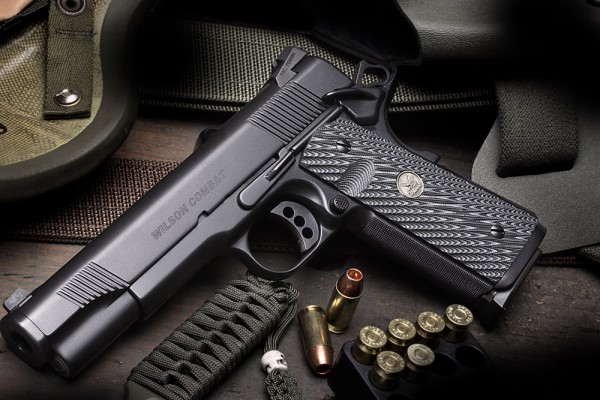
With permission of WC, here’s what a Tactical Elite looks like now in its basic configuration.
Meet the Wilson Combat (WC) Tactical Elite (TE), a really nice full size 1911 with a unique flanged cone barrel. The claim of softer recoil and faster shot-to shot-recovery (due to almost two ounces additional weight) is not a false boast. I base this on the comments of friends who have shot my TE, and from personal experience. There are a couple of pistols in WC’s expansive current offerings I now might like better, but that in no way diminishes this rather unusual iteration of the 1911.
Armed Self Defense And Stand Your Ground Laws: What’s New Is Old
I previously wrote a two part “primer” (posts of 12/29/2012 and 1/14/2013) on the use of deadly force, which included a brief explanation of Stand Your Ground (SYG) laws. As I write this, a criminal jury is being chosen in a well-known Florida case. (A Neighborhood Watch volunteer shot and killed a teenage guest in the residential community he was patrolling). Although almost all of the prospective jurors interviewed so far in the jury selection process have denied knowledge of the case, I suspect readers of MSW who carry a handgun daily, whether LE or private citizen, are rather familiar with the case and the widespread press coverage of it. Continue reading
PRO TIP: AGING EYES
At some point (over 30 for some, 40 for many, and by 50 for most) the eyesight prescription (Rx) which corrects for the best distance vision no longer also provides a sharp handgun front sight. For many, “progressive” eyeglasses or “multi-focal” contact lenses do not work well for shooting, and thus they are not the answer. Here’s a suggestion for a relatively easy fix which can work for duty, competition, and everyday activities. It’s called monovision; one eye is corrected to see close up (normally for reading), and the other to see distance. If it is going to work for you, within one week or so you will no longer realize you are using a somewhat exotic Rx. However, you may experience a slight decrease in the depth perception you would have using regular binocular vision. Continue reading
PHOTO OF THE DAY: HILTON’S NEXT COOL SHIRT
Available at Tactical Distributors: http://www.tacticaldistributors.com/ssd-x-td-keep-calm-and-return-fire-2-0
LIGHTEN UP, IT’S 2013
Trainers urge when you carry a gun, you should carry a light, day or night. I agree and do. (Many LEO’s and non-sworn professionals have a weapon light mounted on their handgun at all times. As one who spent range time and money learning the “classic” handheld handgun light techniques, I leave weapon mounted light discussion to the more knowledgeable MSW contributors. OK, I confess I do have one weapon light, a Surefire X300 Ultra, mounted on a rifle). I respectfully offer here a long-term user’s observations on EDC lights, and in passing, some other illumination products I have found useful along the way. Continue reading
PIC OF THE DAY: URBAN SECURED CARRY
So, you have your urban gear backpacked and off you go on foot or public transportation. What if you must go inside premises where you will be separated from your kit (for example, it will be stowed in a locker) and your concealed handgun can’t accompany you? Check out the GunVault MicroVault with Oakley Panel Pack.
You might even be able to deploy the wire cable lanyard that accompanies some lock boxes. The above box has one.
IT’S BACK: THE POLICE MARKSMAN
If you’re LE, this is a must read periodical. Now online bi-monthly, and issues can be downloaded. Available on smartphones and tablets too. McKenna’s “Officer Down” lessons learned feature returns.
Here’s a link to the first issue: http://plego.info/policemarksman/current-issue/







